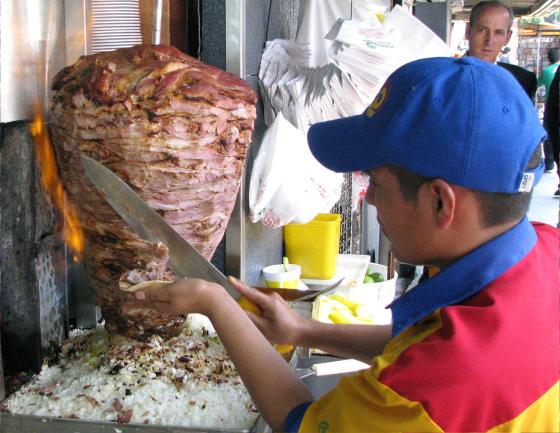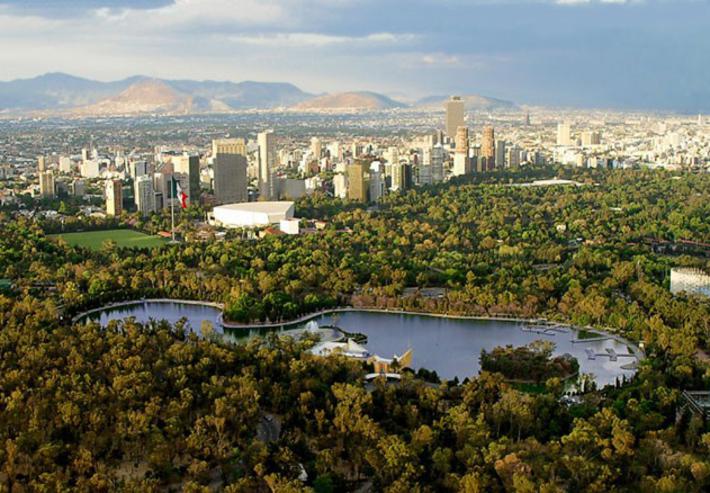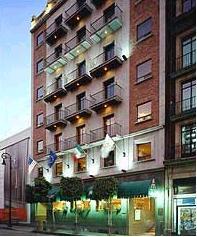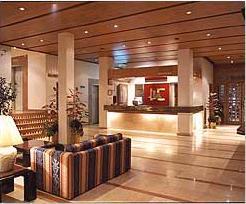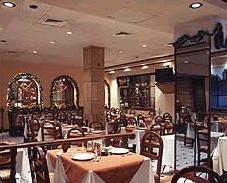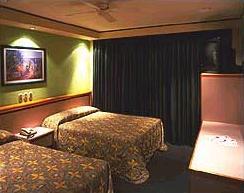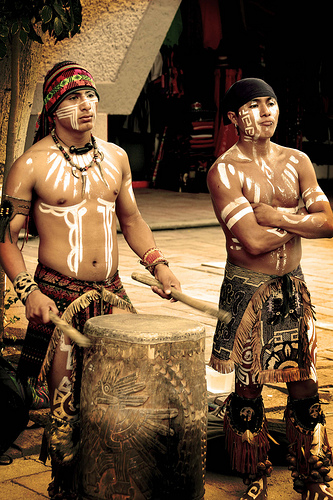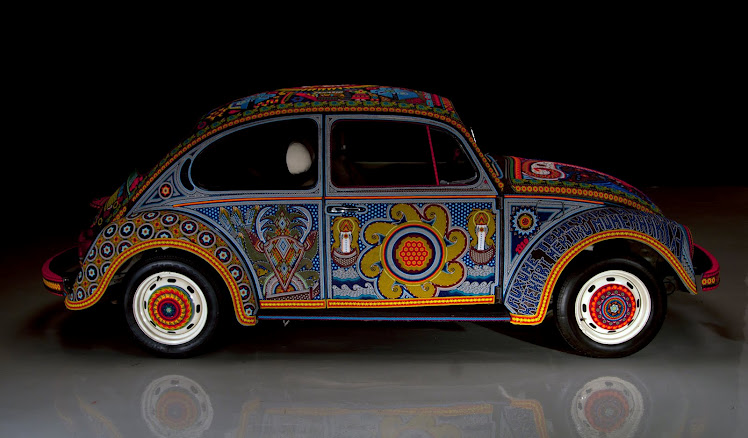 | ||||||
Mexico City
By Jeremy Schwartz
Wednesday, April 23, 2008
MEXICO CITY — The faithful gather beneath a bridge, drawn by the smell of grilling steak strips and frying sausages. If tacos are holy in Mexico City (and surely they are), then for many, the Chupacabras food stall beneath the freeway Rio Churrubusco is the shrine.
It's lunchtime and the line of office clerks, college students and construction workers spills out onto the street.
"Everybody comes here," says Karla Chavira, a 27-year-old saleswoman. "You ask anyone and they will tell you. These are the best tacos."
I make my way to the front of the line and order the house special, a mix of steak, sausage and cecina, a thin
flank of beef. The sign above the stall claims there are 127 secret spices in the marinade. The taco is delicious; the flavors of the meat mingle with a creamy avocado salsa and perfectly cooked beans. I am hooked.
And so begins my quest for Mexico City's best street food.
The Mexican capital is one of the world's great street food cities, on par with places such as Bangkok, Thailand; New Delhi, India; and Shanghai, China. Every corner, it seems, teems with gorditas, huaraches, sopes, pambazos and, of course, tacos. Unfortunately, worries about its effect on stomachs have scared many tourists away from street food, but for those willing to take a chance, the rewards can be glorious.
"The best Mexican food is the food of the people, and that's the stuff that you find on the street and in the markets," says José Iturriaga, a historian who has written more than 20 books about Mexican cuisine. "There are no concessions in these stalls to gastronomical fashion. These are time-tested recipes."
I collected recommendations from friends and co-workers and built up a formidable list of local favorites.
As my week of gluttony progressed, I realized that trying the city's best street food is not only a way to pleasure my taste buds but a way to explore parts of the megalopolis that don't make it into the guidebooks. The only stomach distress that resulted from my tour came from stuffing myself at my first stop.
My tasting tour began at a stand in far southern Mexico City that sells tortas, a kind of a Mexican sub sandwich. Tortas are made with fresh rolls, avocado and jalapeños and filled with anything edible that the imagination can fathom.
The plain street stall, which sits in the middle-class and tourist-free neighborhood of Coapa (near the canals of Xochimilco), has a dedicated fan base with touching tributes on the Web. The place is called Muertortas (a play on the words torta and muerte, or death), and when I arrived, I learned why.
Muertortas is famous for its massively huge tortas. The biggest, the Cubana, weighs in at 4.4 pounds of ham, pork, cheese, hot dogs and onions. The stall gives them away free to anyone who can put away two. Only one person in the 25-year history of Muertortas has managed the feat.
The Cubana was too much torta for me, so I ordered the Lambada, which is stacked high with marinated pork, chorizo, white cheese and a fried egg. Once I figured out how to take a bite, it was scrumptious. The other customers, I learned, were addicts. "If we are in the neighborhood, we come straight here. It's the first thing we think about," said Jonathan Luna, munching on a torta of hot dogs, pineapple and breaded meat with his fiancée.
The next stop was for carnitas in the remarkably low-key local market of the Del Valle neighborhood, near the Mexico City bullfighting ring. Carnitas, slow-cooked pork (it's deep-fried and crispy in some places), is a weekend lunchtime favorite for Mexican families — it's hard to find any in the city after 4 p.m. The best carnitas, several locals told me, are served up by Jorge Martínez, whose great-grandmother started the business in 1935 as a street stand. Like many of the most successful places, the carnitas stall migrated to the market and became a sit-down restaurant.
Martínez simmers his carnitas with milk and orange juice, and the result is creamy, succulent pork. Carnitas include nearly every part of the pig, from the snout to the stomach. Regular pork is called maciza and is often mixed with more exotic cuts. I tried a taco of maciza and cuero, basically slow-cooked — not fried — pork rinds. It was sinfully fatty and greasy, the cuero nearly melting inside my taco and bathing the pork in yummy goodness. My arteries cried out for mercy, but my taste buds called for more.
After the tortas and the carnitas, I needed something a little lighter. I headed the next day to the market in the Coyoacán neighborhood, a couple of blocks away from legendary artist Frida Kahlo's famous blue house, for some tostadas.
Mexico City residents will argue to the death over the best tacos in the city, but there seems to be almost universal agreement that the Coyoacán market has the city's best tostadas. Tostadas are flat, crunchy tortillas topped with avocado, sour cream, shredded lettuce and a dizzying array of fillings. Inside the cavernous market, dozens of heaping platters tempt passers-by. The market serves up the traditional favorites of shredded chicken and pigs' feet, but also more exotic fillings such as octopus, ceviche and crab.
I tried the surimi, a heavenly mix of shrimp, cilantro, mayonnaise and crab, ordered a fresh pineapple juice and tucked into the meal. Next to me a group of necktie-clad bankers ordered a steady stream of exotic tostadas.
Feeling somewhat refreshed, and even a tiny bit healthy, I was ready to resume hard-core street food tasting. The next day I headed downtown to try some tacos al pastor, Mexico City's equivalent to the ubiquitous New York City pizza slice.
A direct descendant of the Middle Eastern gyro, al pastor consists of big cones of pork spinning vertically on spits. Though it emerged in Mexico only about 50 years ago, tacos al pastor has become the quintessential Mexico City food and is spreading inexorably through the country and into the U.S.
Since 1959, El Huequito has been making what many claim are the city's best tacos al pastor. The name of the place means "little hole" and that's exactly what the stall is — a closet-sized place that requires customers to eat on the sidewalk. Although the location is humble, El Huequito has grown over time. There are now two El Huequito restaurants in more posh parts of town and a catering business. But the hole in the wall on a busy downtown street remains the original.
Guillermo Buendia Gonzalez, who's been selling tacos at El Huequito for 30 years, explained what it takes to make a perfect al pastor taco. First, pork filets are marinated in a secret sauce (most street chefs guard their spices and marinades as though their lives depend on it) and then layered to make the famous orb. It takes an expert hand to correctly and thoroughly cook the meat, spinning it with an exact geometry. Finally the salsas: El Huequito uses two that are renowned throughout the city: a fiery green salsa mixed with chunks of avocado and a sublime orange salsa made of a secret blend of chiles.
The tacos are a revelation; the meat is perfectly crunchy on the outside and tender on the inside.
"This place is on another level," says Eduardo Diaz, an electrical engineer who has been coming to El Huequito since 1990. "The tacos just have a very special taste. You can't pass by without eating some."
With that, my gastronomical tour of Mexico City ended, for now.
Iturriaga, the historian and food expert, tells me that perhaps the single best taco in the city is the "taco de ojo," a taco made of cow eyes, sold in a market just a few blocks from my house. "They are extraordinary," he insists.
I think I'm just going to have to try one.
Street food safety
Getting sick is always a worry when eating street food in Mexico City, and a case of Montezuma's revenge can quickly spoil a trip south of the border. It's necessary to balance a thirst for adventure with common sense. Eating street food might be less dangerous than in the past (Mexico City's tap water has become safer and more street vendors are practicing better hygiene), but you still need to take some precautions. Here are some tips:
Market stalls tend to be safer and cleaner than those on the street.
Get recommendations from locals: Mexico City residents also get sick from some bacteria, and unsafe places quickly get a bad reputation.
Look for lines: The most popular places also tend to be the cleanest.
Lots of lime: Some street food fanatics swear that by drowning their tacos in lime juice, they can ward off bad bacteria.
Others say grapefruit seed extract taken along with a street food meal keeps their stomachs healthy.
Home remedies include drinking olive oil and bicarbonate of soda before a meal.
Chapultepec Park and Lago Mayor
The streets of Mexico's capital are a paradise for adventurous food lovers. El Huequito is famous for its tacos al pastor, which start out as big cones of pork spinning vertically on spits.
Hotels in Mexico City
Hotels in Mexico City (D.F.) run the gamut in quality and price.
Cheap Hotels are available, inexpensive hotels are nice and the high priced hotels are luxurious.
Hotel Gillow, 5 de Mayo is their sister hotel and is a little nicer.
Hotel Catedral
Donceles # 95
Mexico City, 06020
Tel. Reservations: 01-800-701-8340
USA / Canada: 1-866-291-2312
(011-52-55) 5518-5232 / 5521-6183 from United States
I usually stay at Hotel Catedral, Donceles 95, (US$35-$45) because it has free parking and located behind the Catedral on the Zocalo.
The dignified-looking, seven-story Gillow is a modern hotel with six stories of rooms grouped around a long, glass-canopied, rectangular courtyard with a colonial fountain. Were it in the Zona Rosa, the Gillow could easily cost three times what it does. The well-kept, carpeted rooms have comfortable beds, tub/shower combinations, and excellent lighting. Some units are small, with one double bed and enough room for one person's luggage. Others are quite spacious, with a long carpeted bench for suitcases. Interior-room windows open to an airshaft; exterior rooms have small terraces with wrought-iron furniture. Request a room as far away from street noise as possible. The hotel is between Cinco de Mayo and Madero -- a hard-to-beat downtown location. No on-site parking.
Hotel Maria Cristina
Rio Lerma 31 This hotel is really nice. Location is several blocks from Zona Rosa, metro station is on the other side of that, and not very central. Very busy street to cross to Zona Rosa.
.Last of the Mayas! Mexico City

100%
Sponsor
Free
Hotel Aeropuerto
ph#555-785-5851 – outside DF
ph#5-785-5851 – inside city
"Boulevard Puerto Aéreo 380
Mexico City 15530, MEXICO
Price Range: $500-$600 pesos
Daniel C Schechter, Lonely Planet author, wrote:
Although the airport is easily reached from downtown by metro, travelers making early morning departures can check in by the runway to get an extra hour's sleep. Just across the street from the airport, this is the least expensive option within walking distance.
Though it lacks the flash of the two upscale towers attached to the terminal and provides no airport shuttle like the two generic franchises on the same street, the zone's only non-chain hotel serves its purpose admirably and it's just a few minute's walk from the terminal. Not as bleakly functional as the aluminum façade portends (or the name suggests), it offers neutral modern rooms either overlooking the airport runway through soundproof windows or facing rows of plebeian apartment blocks out back. Helpful reception staff work from inside a glass booth that's adjacent to a small restaurant/bar where low-level execs await their flights.
The city now known as Mexico City was founded by the Mexica, also called the Aztecs, in 1325. The old Mexica city is now referred to as Tenochtitlan. The Mexica were one of the last of the Nahuatl-speaking peoples who migrated to this part of the Valley of Mexico after the fall of the Toltec Empire. Their presence was resisted by the peoples who were already in the valley, but the Mexica were able to establish a city on a small island on the western side of Lake Texcoco. The Mexica themselves had a story about how their city was founded after being led to the island by their principal god, Huitzilopochtli. According to the story, the god indicated their new home with a sign, an eagle perched on a nopal cactus with a snake in its beak. Between 1325 and 1521, Tenochtitlan grew in size and strength, eventually dominating the other city-states around Lake Texcoco , and in the Valley of Mexico. When the Spaniards arrived, the Aztec Empire reached much of Mesoamerica, touching both the Gulf of Mexico and the Pacific Ocean.
36 Hours in Mexico City
By BROOKS BARNES
Published in New York Times: January 24, 2010
POOR Mexico City. Just as it was luring back travelers with cool new hotels, a flourishing contemporary art scene and semi-endurable pollution levels, Mexico’s escalating drug violence became front-page news. Then the capital became a swine flu epicenter. Suddenly, a run for the border didn’t seem like such a smart idea. Ready for the truth? The time to visit this megacity — about 20 million people live in the metropolitan area — has rarely been better. Eager to attract people again, luxury hotels are offering specials that slash room rates by up to 65 percent. More restaurants, hotels and art galleries have sprung up in chic neighborhoods like Condesa and Roma. And Mexico City has probably never been this clean: even the street vendors now cart around big bottles of hand sanitizer.
A Weekend in Mexico City
Friday 4 p.m. 1) AZTEC ASSIMILATION
A stroll through Condesa, the lush neighborhood where Paris Hilton frolicked when she visited (don’t hold that against it), will quickly vanquish the stereotype of Mexico City as an unsafe eyesore. Start at Parque Mexico (intersection of Avenida Sonora and Avenida Mexico), where locals and their dogs mix with hipsters en route to sidewalk espresso bars. A Macarena dance contest (irony included) was in full swing in the band shell on a recent weekend. Atlixco, a side street nearby, is becoming a hub for boutiques. Soho Condesa (Atlixco 100B; 52-55-5553-1730) serves up funky sunglasses on fur-lined shelves, while Milagro (Atlixco 38, www.collection-milagro.com) has colorful handbags embroidered by local artists.
9 p.m. 2) RESTAURANT ROW
The posh district of Polanco, with its leafy streets named after famous writers, is the center of the city’s foodie scene. There are newer restaurants — Astrid & Gastón (Tennyson 117; 52-55-5282-2666; astridygaston.com), the latest from the Peruvian restaurateur Gastón Acurio, opened with a splash about a year ago. But the young, moneyed crowd still flocks to an older favorite: Ivoire (Emilio Castelar 95; 52-55-5280-0477). The French-Mexican menu can be hit and miss (try the lobster risotto with azafrán for 250 pesos, or $20 at 12.5 pesos to the dollar), but the buzzy rooftop bar with candle-lit views makes up for it.
11 p.m. 3) NO WORM, JUST CHICKEN
Mezcal, once spurned as the poor man’s tequila in Mexico and historically sold in the United States with a gimmicky worm floating inside, was embraced by trend setters here a few years ago and the craze continues. La Botica (Campeche 396, Condesa; 52-55-5211-6045; labotica.com.mx) serves up over 30 varieties, including one steeped with chicken breasts during distillation. Locals insist that the chicken softens the alcohol’s smoky flavor, and they are right. Sip, don’t slam.
Saturday 11 a.m. 4) ART INJECTION
Two stars of the contemporary art world — Gabriel Orozco and Miguel Calderón — have been nurtured by the quirky Kurimanzutto Gallery (Rafael Rebollar 94; 52-55-5256-2408; kurimanzutto.com), which moved into a renovated lumber yard in San Miguel last fall. Older galleries are clustered in the adjacent Roma district, including OMR (Plaza Rio de Janeiro 54; 52-55-5207-1080; galeriaomr.com), which handles artists like Rafael Lozano-Hemmer, known for working with electronics and sound.
12:30 p.m. 5) NEW KID ON THE BLOCK
Visiting art dealers and collectors often head to Contramar (Durango 200, Roma; 52-55-5514-3169; contramar.com.mx) for lunch, feasting on raw-tuna-topped tostadas and basking in the see-and-be-seen atmosphere. Another lunch spot, which has landed on several best-new-restaurant lists, is Fonda la Veracruzana (Medellín 198, Roma; 52-55-5574-0474). Decorated with white- and green-checkered tablecloths, it serves impossibly fresh Peruvian seafood dishes at bargain prices (44 pesos for a “small” portion of the ceviche, which came in a giant sundae glass). The salty fried shrimp with garlic (110 pesos) was good, too.
2 p.m. 6) BIZARRE BAZAAR
You’ve done high art, now go low. Bazar del Sábado (Plaza de San Jacinto, San Ángel) is a Saturday flea market where locals and tourists alike go to haggle for deals on handicrafts (blankets, baskets, jewelry) and chat with street artists. Pick up a glittery, kitschy Our Lady of Guadalupe box shrine (about 155 pesos) and don’t miss the adjacent flower market, a dank but fascinating rabbit warren of cement stalls displaying over-the-top arrangements like a lion’s head made out of yellow spider mums.
4 p.m. 7) OUR LADY FRIDA
Homage must be paid to Frida Kahlo, the seemingly ubiquitous unibrowed painter and wife of the muralist Diego Rivera. Most visitors head to her former home, now Museo Frida Kahlo (Londres 247, Coyoacan; 52-55-5554-5999; www.museofridakahlo.org.mx). In the former home of a socialite art collector, the Museo Dolores Olmedo is a less touristy gem (Avenida Mexico 5843, Xochimilco; 52-55-5555-1221; museodoloresolmedo.org.mx) where some of Kahlo’s famous canvases hang. Look for the self-portrait depicting her spine as a broken stone column.
6 p.m. 8) PARADE, FLOAT
Get in touch with your inner Aztec with a visit to the nearby “floating gardens” of Xochimilco (www.xochimilco.df.gob.mx). This network of shallow canals, where early settlers farmed on artificial islands, is a remnant of the lake that once covered part of the valley where Mexico City rests. Locals arrive on weekends for raucous fiestas on trajineras, wooden boats painted in wild colors that can seat as many as 20 people. Hire your own boat for about 160 pesos an hour . Other boats sell food (tacos, circles of jicama on a stick) and beer. Feel like joining the party? Hire a mariachi band (prices vary) to sail with you.
8 p.m. 9) GASTRONOMIC GLITZ
Rejoin the 21st century at Distrito Capital (Juan Salvador Agraz 37; 52-55-5257-1300; hoteldistritocapital.com), a sleek restaurant that opened last year in a skyscraper in the ritzy Santa Fe business district. The chef Enrique Olvera — the force behind Pujol, one of the city’s fanciest restaurants — serves up a more casual menu here of surf (sea bass marinated with guajillo peppers and garlic in a pineapple sauce, 195 pesos) and turf (New York steak with guacamole and prickly pears, 250 pesos). If it’s a clear night, the hotel offers spectacular views of the volcanoes beyond the city.
10 p.m. 10) IT’S (NOT) A DRAG
The Ballet Folklórico? That’s for wimps. Downtown — still a shady area at night, so leave the jewelry behind — is a cabaret show that is as outlandish and bizarre as it is exhilarating. At itty-bitty La Perla (República de Cuba 44, Centro; 52-55-1997-7695), drag queens bedazzled within an inch of their lives entertain a multigenerational crowd of (mostly heterosexual) locals. Couples dance salsa between shows; the cover is 120 pesos. Have your picture taken with the impersonator Lupita D’Alessio, the Liza Minnelli of Mexico.
Sunday 11 a.m. 11) FREE RIDE
After a busy Saturday, unwind on a bicycle: the government lends them free (with helmet) from kiosks along the Paseo de la Reforma, although you may want to skip the line and rent one from vendors set up in front of the National Museum of Anthropology (Paseo de la Reforma at Gandhi; 52-55-5553-6381; mna.inah.gob.mx). The Paseo de la Reforma, modeled in part on the Champs-Élysées, is closed to cars on Sundays until early afternoon to accommodate bicyclists. It’s liberating to zoom through the circular plaza marking the Mexican War of Independence — and not only because it is usually choked with traffic. A good pit stop is the entrance to the Bosque de Chapultepec, the city’s largest park, where vendors sell freshly peeled, spice-covered oranges for a few pesos.
1 p.m. 12) CACAO MEXICAN STYLE
Reward yourself with Mexican chocolates from Princesse Cacao (Fernando Montes de Oca 81, Condesa; 52-55-5211-0276). The newish chocolatier specializes in artisanal candy from Tabasco and Chiapas, the two southern Mexican states where some historians say chocolate was invented, or at least refined (about 13 pesos apiece). Fabuloso!
THE BASICS
Continental, Delta and AeroMexico fly to Mexico City from New York, starting at $434, according to a recent online search. For safety reasons, avoid hailing a cab when you arrive at the airport. Rather, arrange for a pickup from your hotel ahead of time. If you forget, hire a licensed taxi from inside the airport.
The Four Seasons (Paseo de la Reforma 500; 52-55-5230-1818; fourseasons.com/mexico) is the roost of choice for luxury travelers. Aside from its well-coordinated car service, the hotel is known for its azalea- and myrtle-filled central courtyard. Special weekend rates start at about 2,125 pesos, or about $170 at 12.5 pesos to the dollar.
The hipper-than-thou Condesa DF (Avenida Veracruz, N. 102; 52-55-5241-2600; condesadf.com) opened five years ago and is still ground zero for urban cool and celebrities, who flock to its atrium bar. Bring earplugs. Rooms start at 2,066 pesos.
Restaurants
La Blanca - "The White (Cow)"
There are white cows around restaurant! Located on 5 de Mayo, at Isabel La Católica, across from Hotel Gallow
I ordered Huevos Divorciados, Divorced Eggs, called so because one side of the dish is covered with red sauce and the other with green. And, if a couple can't agree on sauces, they are headed for divorce.)
Bottom of stack is a tortilla, then beans, then sunny side eggs and finally the sauces. Delicious. I mopped-up every drop of sauce with a giant bollio.
Sometimes, like Europe, when rolls and pastries are placed on the table, there is a charge for each roll eaten. It's usually less than 20 cents, but most gringos are not accustomed to this.
Los Girasoles (The Sunflowers)
You will be pleased to know that grasshoppers are, like France's escargot, (snails) purged of poop, and either sun dried or grilled with onions or garlic. They are high in protein, and extremely low in fat.
The refried beans were served on a small tortilla and the guacamole was in a tortilla cornucopia. Grilled, whole, baby onions were the finishing touch.
The menu was too vast to remember and in a previous visit, before my Palm, I had asked for a menu. The hostess very abruptly told me "No." (Did I use a wrong Spanish word?)
This visit, after a photo of my plate, and writing in my Palm, the owner stormed over to my table and told me, in Spanish, "No writing."
I said, "Perdón?" (Did I misunderstand his Spanish?) He then said, "Y no photos!" I understood that!
When I immediately apologized, he cooled down and explained that his menu was copywrited. He showed me the dishes on the menu that his restaurant actually paid a royalty to the originator.
I promised never again to bring my Palm or camera to Los Girasoles. Just my appetite.
Being an artist myself, I understand the issues involved in photographing works of art. And, food is art, especially in the stomach of the beholder.
Posada Santa Domingo Hosteriá
When in Mexico City, Eat in the Streets
Café Tacuba
Tacuba 28 (Between República de Chile and Bolívar, Col. Centro)
Metro stop: Allende
One of the city's most famous restaurants, Café Tacuba dates from 1912 and boasts a handsome colonial-era atmosphere. A favoritie for breakfasts. Guests are welcomed into one of two long dining rooms, with brass lamps, dark oil paintings, and a large mural of nuns working in a kitchen. The menu is authentic Mexican with traditional dishes, including tamales, enchiladas, chiles rellenos, mole, and pozole. Wednesday through Sunday from 2 until 10pm, a wonderful group of medieval-costumed singers entertain; their sound is like the melodious estudiantina groups of Guanajuato accompanied by mandolins and guitars. A trio or quartet plays romantic boleros on Mondays and Tuesdays from 8 to 10pm. Hours - Daily 8am-11:30pm
Fonda El Refugio
Liverpool 166 (Between Florencia and Amberes, Col. Juarez Zona Rosa)
Metro stop: Insurgentes


More than 40 years of tradition have shaped the service, food, and atmosphere here, making this a special place for authentic Mexican dining. It's small and unusually congenial, with a large fireplace decorated with gleaming copper pots and pans. The restaurant manages the almost impossible task of being both refined and informal. The menu runs the gamut of Mexican cuisine, from arroz con plátanos (rice with fried bananas) to enchiladas con mole poblano, topped with the rich, thick, spicy chocolate sauce of Puebla. For a main course, I recommend the huachinango a la veracruzana (Veracruz-style red snapper with tomatoes and olives). Or if you're in a spicy mood, the chiles poblanos stuffed with ground beef or cheese. For dessert, opt for the coconut candy or the mouth-watering flan. The tortillas are handmade, and the margaritas are potently delicious. Fonda El Refugio is very popular, especially on Saturday night, so get here early. Daily 1-11pm
Restaurant Danubio
República de Uruguay 3 (Near Bolivar, Alameda, Centro Histórico)
(Near Bolivar, Alameda, Centro Histórico)
Metro stops: Bellas Artes or Salto del Agua
www.danubio.com
Danubio’s Spanish Cuisine has been a Mexico City tradition since 1936, and it remains an excellent choice for dining in the Historic Center. Photos of celebrity diners line the walls of the classically European-style room. The Basque-inspired menu offers a range of selections emphasizing seafood, and the house specialty is langostinos (baby crayfish). A tasting menu with five small dishes (not including wine) is available for only $15. Much of the food is prepared on an old coal and firewood stove. Danubio, which lies south of La Alameda, is also noted for its excellent wine cellar. Daily 1-10pm
VOCHOL is the first objet d´art of Huichol art on wheels in the world . It is an unprecedented and unique in the history of popular art,
which dramatically enhances the cultural and artistic wealth of Mexico.
Asociacion de Amigos del MAP, A.C. http://amigosmap.blogspot.com/
Museo de Arte Popular http://www.map.df.gob.mx/ VOCHOL
Folk Art Museum
Museo de Arte Popular
REVILLAGIGEDO ESQ. INDEPENDENCIA
MEXICO CITY, MEXICO
September 19 is the anniversary of the tragic earthquake in Mexico City in 1985, causing the deaths of at least 10,000 people and serious damaging the Greater Mexico City Area.
At 7:17:48 am on September 19, 1985 the earth began to shake, from the epicenter located very near Lazaro Cardenas, Michoacan. At 7:19 am the 8.0 earthquake hit Mexico City.
The event caused 412 buildings to collapse and another 3,124 were seriously damaged. While the number is in dispute, the most-often cited number of deaths is an estimated 10,000 people, but experts agreed that it could be up to 40,000.
36 Hours in Mexico City
New York Times
By FREDA MOON
MARCH 21, 2014
Built from the rubble of violent conquest, Mexico City has endured both the torment of Pacific Rim fault lines and the explosive force of its own expansion. Now with a greater metropolitan area of 21 million, Mexico’s nearly 500-year-old capital is made of ancient stone and gleaming glass, Old World architecture and indigenous tradition. With its plazas and palm trees, its murals by Mexican masters and its contemporary street art, it is a beautiful city — and one that has been spared from much of the country’s drug war violence. In recent years, the Distrito Federal has been treated to the opening of one art institution after the next, from the Carlos Slim-funded Soumaya Museum, which moved into a $70 million building in 2011, to the new David Chipperfield-designed Jumex Museum, which focuses on contemporary work and opened last November.
FRIDAY
1. To the Market | 3 p.m.
Mercado de Medellín isn’t the dizzying spectacle of the larger, citywide markets, like the wonderful Mercado de Jamaica flower market or the Mercado de San Juan, where chefs shop. Instead, Medellín is a neighborhood institution that offers a glimpse of what is being lost with the proliferation of supermercados. Stalls specialize in spices, kitchen implements, fresh fruit juices, whole pig’s heads or sheets of chicharrón. For a market lunch, look for a large yellow banner. Since 1968, Los Canarios has been serving grilled meats, like sliced filet mignon (90 pesos, or $7 at 13 pesos to the dollar) a la tabla. Nearby, Ostionería La Morenita has shrimp empanadas (20 pesos) with a flaky crust and a dollop of mayonnaise.
2. Old World | 4:30 p.m.
Take a walk through Colonia Roma, a gorgeous old neighborhood of Art Deco and Porfirian (a distinctive mix of European architectural styles, popular during the presidency of Porfirio Díaz). In recent years, antique showrooms, sidewalk cafes and boutiques have opened along Álvaro Obregón — a boulevard with a tree-lined pedestrian walk along its spine — as well as nearby streets, like Calle Colima. Stop into Panadería Rosetta, a narrow bakery with white tile walls, well-made espresso drinks and croissants, vegan muffins and classic Mexican baked goods like pan de pulque and conchas. There’s also a selection of sandwiches, including one with house-made pâté.
3. Happy Hour | 6 p.m.
For beer drinkers, who may see Mexico as the land of beach-friendly lagers and little else, the newest outpost of El Depósito, a small chain of beer-bar-bottle shops, has an unusually wide selection. When atmosphere trumps innovation, Cabrera 7 has a full (if uninspired) bar and one of the area’s most attractive settings, complete with hanging plants, bright textiles and a balcony overlooking the fountains at Plaza Luis Cabrera, where artists sell their paintings, dogs wrestle and teenagers strut.
4. To the Max | 8:30 p.m.
Maximo Bistrot Local, run by a young husband-and-wife team, is a subdued, elegant corner bistro, with green and cream floors, an open kitchen and a handwritten daily menu. On a recent visit, there was a rich, flavorful lamb loin with huitlacoche purée (280 pesos) and a delicious and surprising tartar of steelhead (135 pesos). Service is excellent; reservations are required. If the nearly 8,000-foot elevation hasn’t gotten the better of you, Roma Norte is home to an outrageous discoteca, Patrick Miller, which has its own subculture devoted to high-energy ‘80s dance music, laser lights and neon graffiti.
SATURDAY
5. Popularity Contest | 8 a.m.
Continue reading the main story
At the 24-hour Café El Popular Restaurante, potent coffee is mixed at the table with warm milk. Beneath beamed ceilings, this retro cafeteria offers breakfasts like huevos rancheros or enchiladas verdes and, if you’re lucky, live Spanish guitar. Then, take the efficient transport system (in this case, the Metrobus) to Mexico’s largest public university, the National Autonomous University of Mexico. In one corner of an expansive nature preserve, the Institute of Biology’s Jardín Botánico has trails leading through a surreal landscape that includes volcanic outcroppings, waterfalls and several hundred species of endangered cactuses, succulents and orchids. Or save your U.N.A.M. visit for the evening, and head for the bucolic Centro Cultural Universitario, a complex of theaters, galleries and performance spaces. The Sala Nezahualcóyotl is home to the university’s philharmonic orchestra, while its cinemas screen a mix of Mexican and international art films and documentaries.
6. Along the Clock Tower | 11:30 a.m.
In the Centro Histórico, at the Metropolitan Cathedral, climb a stone staircase to the small photo gallery, then continue onto the roof and into the bell towers, where giant bronze bells (the oldest, Doña María, weighs about seven tons) are rung by hand once a day, during the 11:30 tour (15 pesos). Afterward, take the incense-scented passageway called the Pasaje Catedral, where devotional statues, crosses, vestments and rosaries are sold, to El Mayor, a rooftop bar and restaurant that looks directly into the ruins of the Aztec city Tenochtitlán at the Templo Mayor archaeological site. The view is the draw here, so sit on the teak deck and skip the food in favor of a coffee or beer.
7. The Classics | 1:30 p.m.
Just down the street, the Spanish Cultural Center has a permanent, free exhibition featuring pre-Columbian artifacts, like Aztec ceramics and carved jawbones. Upstairs, there are temporary exhibits, like one recent display in which marionettes performed erotic scenes behind a velvet curtain. On Friday and Saturday nights, the terrace has musical performances beginning at 10 p.m. For lunch with yet another impressive view, La Casa de las Sirenas has a tequila salon featuring dozens of agave spirits, and a rooftop dining area that peers into the cathedral’s hidden garden. Among the many indulgent dishes, the cazuela de mariscos Claudia (230 pesos) is a brothy dish of fish, shrimp, clams, octopus and crab, big enough to share.
8. Toy Story | 4 p.m.
Since he was 10, the Museo del Juguete Antiguo México founder, Roberto Shimizu, quietly accumulated mass-produced toys (Mexican action figures, German-made racecars, doll’s heads) in the warehouse of his family’s imports store in the Doctores neighborhood. After a life-threatening illness several years ago, he began building what has become a multistory museum and art space, where repurposed objects of all kinds are used as display cases for Barbie dolls, game pieces, lucha libre wrestlers and an ever-expanding universe of playthings. Mr. Shimizu’s unique vision — strange and magical — is captivating.
9. Going Downtown | 7 p.m.
Opened last year in a historic building in the Centro Histórico, the Downtown complex has two hotels (one boutique, one hostel), with a tapas spot, mezcal bar, chocolate shop and a collection of crafts stores. Try Caracol Púrpura for “arte popular” from around the country or Remigio for intricate Oaxacan textiles. In the cavernous patio of the 17th-century Palacio de los Condes de Miravalle building, Azul Histórico is a romantic restaurant, with trees growing overhead like thick pythons, strung with lights. The food, the work of Ricardo Muñoz Zurita, includes regional dishes from around the country, like a flavorful shredded pork cochinita pibil (180 pesos) and shrimp with pipián verde sauce (215 pesos).
10. Maguey City | 9 p.m.
After dinner, walk to Bósforo, an unmarked bar with a thrilling list of mescals, an eclectic playlist and a small selection of snacks, including a blue corn quesadilla with chapulines, or grasshoppers. For a pre-Columbian beverage, head to La Hermosa Hortensia, a pulquería on a far corner of the Plaza Garibaldi, where the mariachis roam with their instruments and sequined outfits. The 77-year-old pulque bar, which serves the viscous, lightly alcoholic Aztec drink in flavors like strawberry and coconut, is included in the intriguing Museos Vivos (museosvivos.com) project, which highlights so-called “Living Museums,” everyday places of cultural and historic significance.
SUNDAY
11. Sweet and Savory | 8 a.m.
On Sunday mornings, Mexico City’s grand boulevard, the Paseo de la Reforma, is closed to car traffic and becomes a bike highway. Pick up one of the communal EcoBici bikes, which have only recently been made available to tourists (inconveniently, visitors must sign up at the tourism office, which is closed on Sunday, so plan ahead: ecobici.df.gob.mx), and join the crowd. For brunch (after 10 a.m.), head to Condesa’s Duo: Salado y Dulce, a small restaurant with an atomic blue tile floor and mismatched chairs. The Sunday menu changes often, but always includes a terrific chocolate croissant made with Oaxacan chocolate and an impressive list of domestic wines, beers and mescals.
12. Imperial View | 1 p.m.
Walk through Condesa’s twin parks, Parque Mexico and Parque España, toward the Castillo de Chapultepec, free on Sundays. On clear afternoons, locals climb Chapultepec Hill to the immaculate grounds of what was once an imperial palace and, later, home to seven Mexican presidents. Today, the hilltop castle is the National History Museum, with checkerboard marble terraces, fountains, historic artifacts and tremendous views.
HOTEL PLAZA REVOLUTION
Jesús Terán 35
Colonia Tabacalera
México CDMX
+52 (55) 5234 1910
